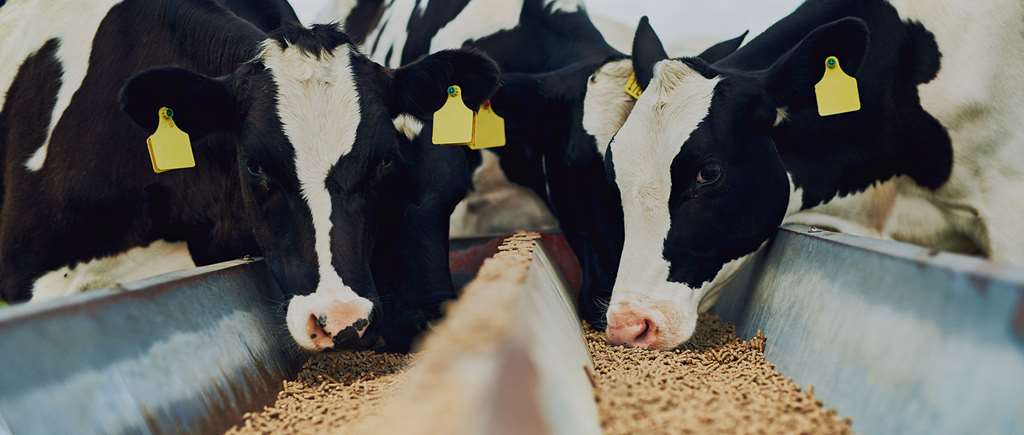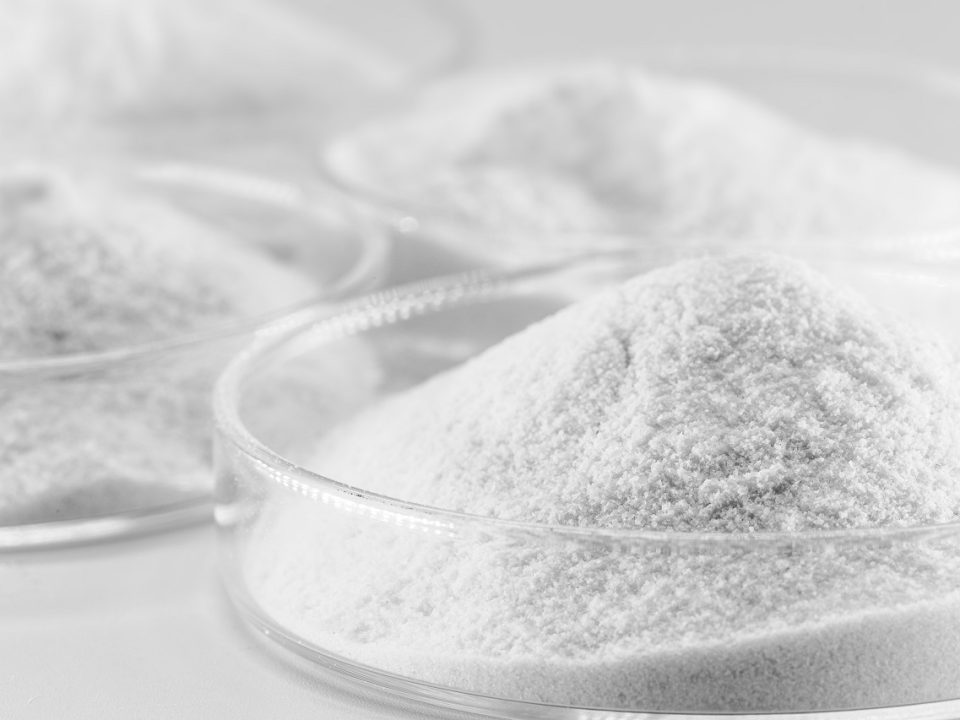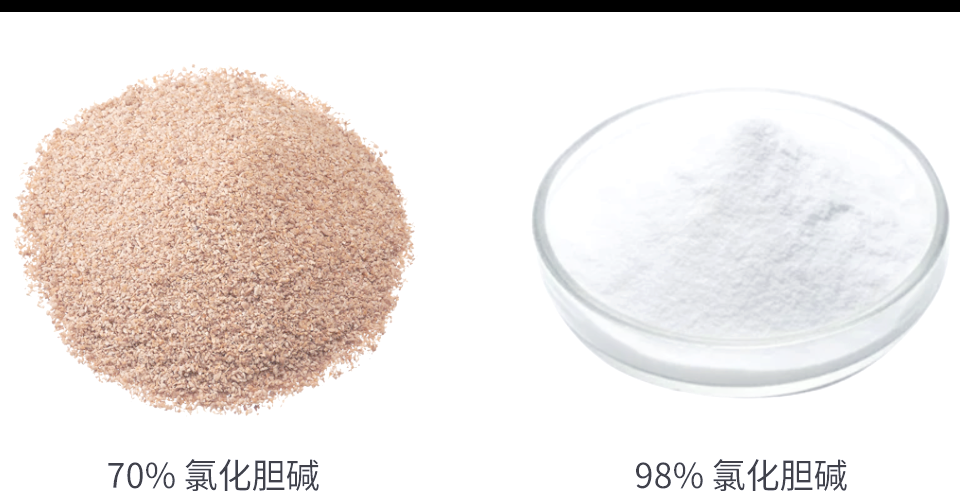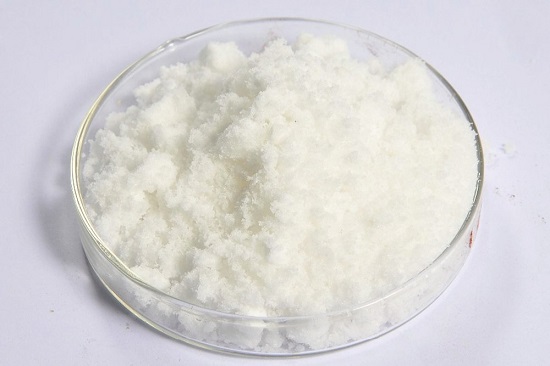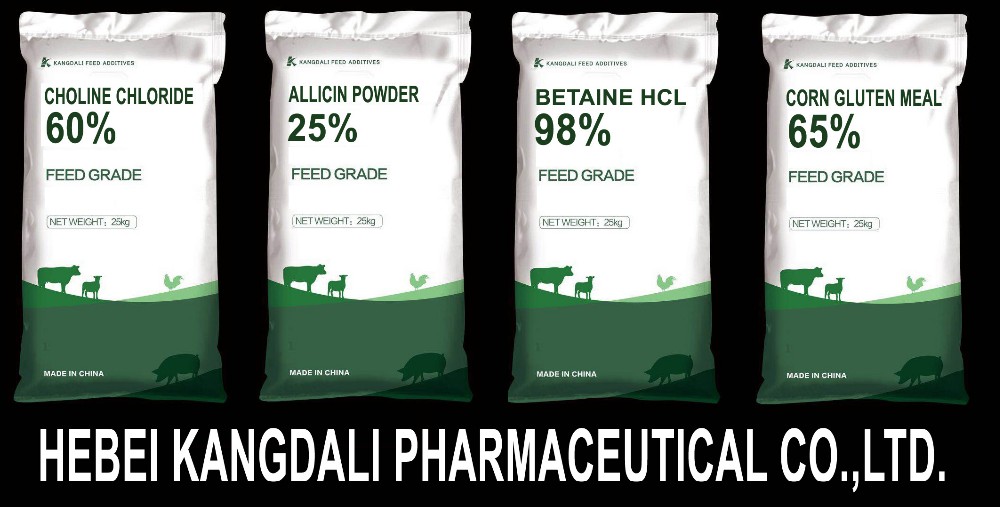Choline chloride 50%, vitamin additive for corn cob feed

How many times can choline chloride be used on a crop in a season?
August 19, 2022
Why do we use feed additives in livestock and poultry farming
September 6, 2022Choline (bis(dihydroxyethyl-trimethyl ammonium chloride 2-hydroxyethyl-trimethyl ammonium hydroxide) is generally classified as a B complex (commonly referred to as vitamin B4). It is a low molecular weight organic compound necessary for maintaining physiological function in the animal body, which can be synthesized in the animal body, but often needs to be added to the feed, and is the largest amount of monomeric vitamin added to the feed. It can regulate the metabolism and conversion of fat in animals, prevent fat deposition and its tissue degeneration in the liver and kidneys, promote the re-formation of amino acids, improve the utilization rate of amino acids, and save some methionine.
Choline chloride is currently the most commonly used and economical form of choline, mainly used for additives mixed into animal feed. Choline chloride is divided into 50% and 60% corn cob type (also known as plant carrier type), 50% silicon type, 70% and 75% water agent. Among them, the 50% corn cob type is the most widely used and economical. In the use of choline chloride, in addition to preventing its hygroscopic deliquesis, it should also be noted that all feed has been to add choline chloride as the last process, because it has a destructive effect on other vitamins, especially when there are metal elements, the destruction of vitaminS A, D, K is faster, so choline should not be added to multidimensional preparations, and the compound feed after adding choline chloride should be used as soon as possible.
If there is not enough choline in animal feed, animals will develop choline deficiency. For example:
Poultry slows growth, egg production rates decrease, and size shrinks. Decreased hatchability of eggs, accumulation of fat in the liver and kidneys, hepatic steatosis, tendon disease, behavioral disorders, muscular dystrophy.
Pigs have slowed growth, behavioral disorders, nervous disorders, muscular malnutrition, poor fertility, and excess fat stored in the liver.
Bovine Breathing disorders, behavioral disorders, no appetite, slow growth.
Fish growth slows, fatty liver, poor feeding efficiency, kidney and intestinal bleeding. Other animals (cats, dogs, and other fur animals) have behavioral disorders, fatty liver, and poor coat color.
|
project
|
50% powder
|
|
|
standard regulation
|
Embe standard
|
|
|
Choline chloride content (dry basis), % ≥
|
50 or 60
|
50 or 60
|
|
Drying loss (moisture), % ≤
|
4.0
|
2.0
|
|
Fineness (passing 850μm sieve) 20 mesh ≥
|
90
|
95
|
|
Heavy metals (as Pb), % ≤
|
0.002
|
0.002
|
|
Trimethylamine residual TMA (ppm) ≤
|
1000
|
300
|
|
Monomethylamine residual MMA (ppm) ≤
|
no clear regulations
|
200
|
|
Dimethylamine residual DMA (ppm) ≤
|
no clear regulations
|
500
|
|
Pesticide residues (calculated as DDT, 666)
|
no clear regulations
|
DDT≤0.02mg/kg
666≤0.05mg/kg
|
|
Aflatoxin
|
no clear regulations
|
not checked out
|
|
salmonella
|
no clear regulations
|
not checked out
|
|
Dioxins
|
no clear regulations
|
not checked out
|
|
genetically modified material
|
no clear regulations
|
not allowed to contain
|


